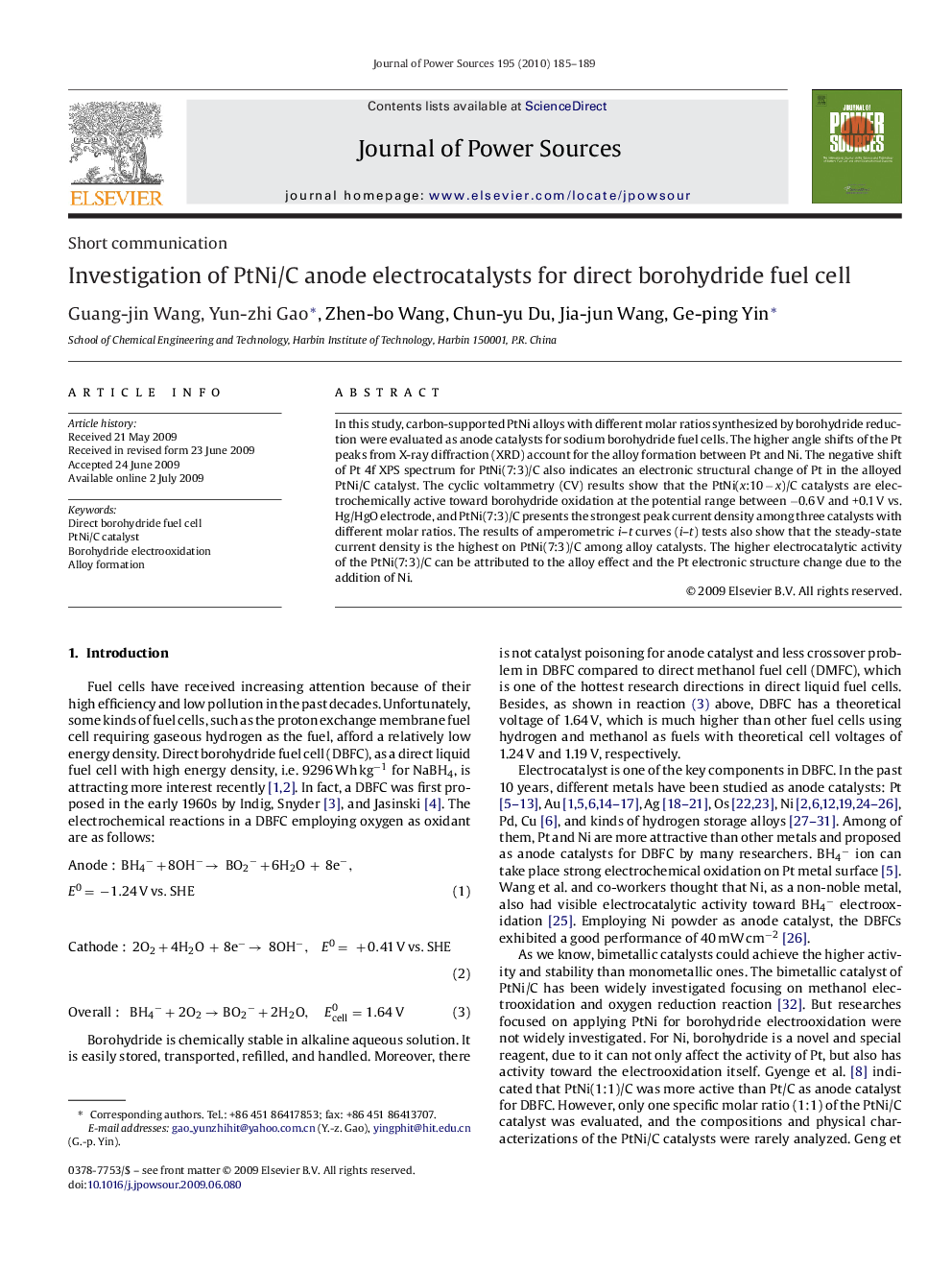| Article ID | Journal | Published Year | Pages | File Type |
|---|---|---|---|---|
| 1293967 | Journal of Power Sources | 2010 | 5 Pages |
In this study, carbon-supported PtNi alloys with different molar ratios synthesized by borohydride reduction were evaluated as anode catalysts for sodium borohydride fuel cells. The higher angle shifts of the Pt peaks from X-ray diffraction (XRD) account for the alloy formation between Pt and Ni. The negative shift of Pt 4f XPS spectrum for PtNi(7:3)/C also indicates an electronic structural change of Pt in the alloyed PtNi/C catalyst. The cyclic voltammetry (CV) results show that the PtNi(x:10 − x)/C catalysts are electrochemically active toward borohydride oxidation at the potential range between −0.6 V and +0.1 V vs. Hg/HgO electrode, and PtNi(7:3)/C presents the strongest peak current density among three catalysts with different molar ratios. The results of amperometric i–t curves (i–t) tests also show that the steady-state current density is the highest on PtNi(7:3)/C among alloy catalysts. The higher electrocatalytic activity of the PtNi(7:3)/C can be attributed to the alloy effect and the Pt electronic structure change due to the addition of Ni.
